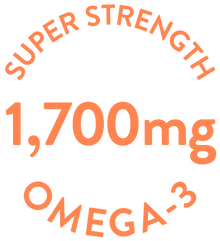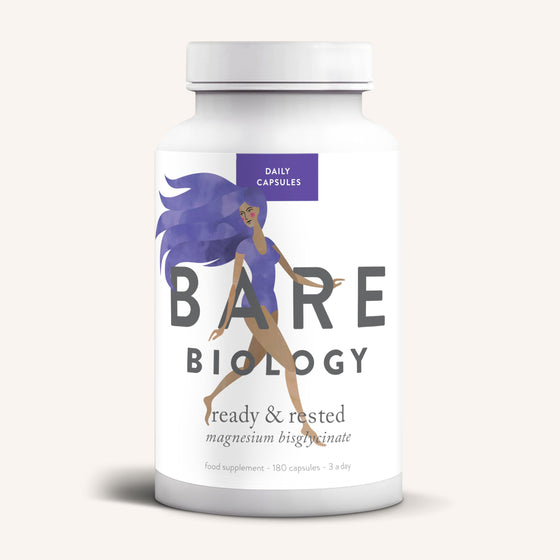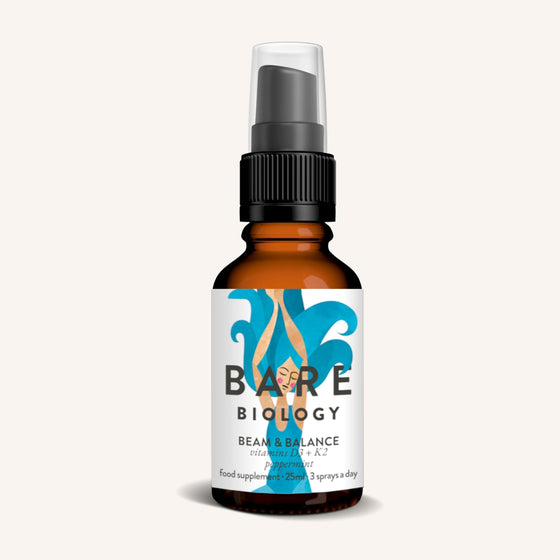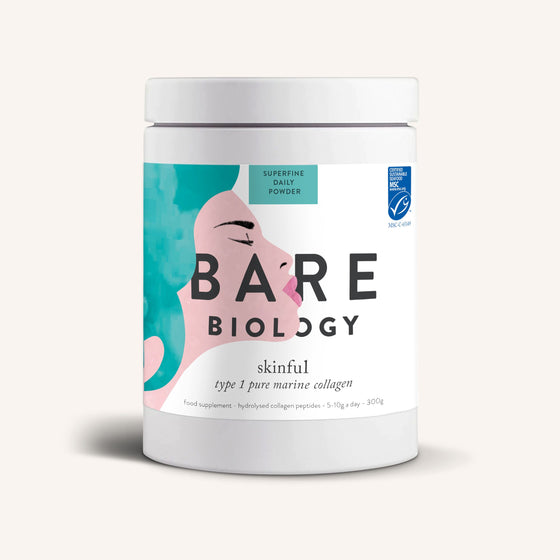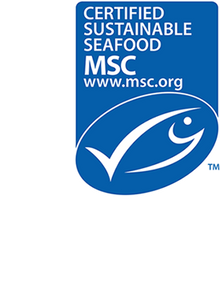Whenever I chat to friends and family about this topic, they initially look at me like I’m a tin-foil hat-wearing conspiracy theorist. Especially when I tell them half the things in their kitchen and fridge are out to kill them - or at the very least - mess with their intricate inner circuitry of happiness, sex drive and resulting physical characteristics.
I’m talking about our exposure to plastics. Food containers, cookware in particular - and most frightening of all, baby products.
Plastics contain a mixture of chemicals, many of which have now been identified as ‘hormone disruptors’(HDs). These chemicals interfere with our endocrine (hormonal)systems at certain doses and these doses don’t need to be large at all for our most vulnerable; newborns and infants. These disruptions can cause cancerous tumours, birth defects, deformations of the body, expressions of characteristics of the opposite sex and other developmental disorders including ADHD.(1)
If you dive into it you’ll find a slew of industries and products infested with HDs.
- Beauty products; including make-up, sunscreens, shampoos (Phthalates and Parabens you’ve probably heard of)
- Fuels and industrial cleaning products
- Pesticides
- General pollutants
There is too much to cover in this article so I’m going to stick to just plastics within the food industry, primarily the one you’ve probably heard of before:
BPA (bisphenol-A). But first a bit of background…
I like using the analogy of our hormones, or more accurately, our hormonal glands as being like CEOs of companies. The big bosses. Their messages (hormones) instruct everyone else what to do. Everyone else being your organs, the nutrients you ingest and basically all your living cells. A few of the CEOs are:
- The testes or ovaries
- Adrenal glands (sitting atop your kidneys)
- Your gut lining: until recently, serotonin (feel good hormone) was thought to be produced only in the brain. Turns out 90% of it is produced in the gut. This is why what you eat is about sooo much more than just calories. But this is a WHOLE other topic for another time.
- Pituitary gland (deep inside the brain). The head honcho. This is like the 'One Ring to Rule Them All’ type gland. *Lord of the Rings reference*
Basically, this delicate balance of profits and losses is tightly controlled by our extremely smart CEOs and it’s best to minimise any outside interference or hostile take-overs from foreign invaders.
"Abundant use of plastics throughout the food industry and in our overall environment has been one of the biggest uncontrolled experiments on the human race ever." Chris Kresser, Functional Medicine Practitioner.
What is BPA?

BPA mimics the hormone oestrogen (estrogen if you’re American). Oestrogen is the female sex hormone and counterpart to the male sex hormone testosterone. It’s important to note that even though these 2 hormones are chiefly responsible for the characteristics of each sex, men still require some oestrogen and females require some testosterone to maintain optimal health or homeostasis, so don’t freak out. Additionally, testosterone is a preserver of muscle mass, the key determinant of longevity in all humans, male and female. (2), (3). Testosterone also helps us recover and repair from injury and exercise, (4), (5) and normal physiological* levels strengthen our immune systems.
*Higher, supra-physiological levels (steroids) can have the opposite effect on the immune system.
Once BPA has entered our blood stream and organs by leeching into our food, water and even the pores on our skin, it binds to oestrogen receptors in our bodies creating oestrogenic effects in the body. Oestrogen is not evil, however excessive levels of it have been linked to everything from cancer, diabetes, infertility, low sperm counts and ADHD.
In males, particularly young men, this can cause symptoms such as gynecomastia: swelling of the breast tissue surrounding the nipples which, if accumulated, can give the appearance of breasts. It’s also thought to be linked to the rapid decline in fertility among males. "Sperm counts among men in the West have more than halved in the past 40 years and are currently falling by an average of 1.4% a year”. (6)
Conversely, puberty in girls has been progressively starting earlier and earlier over the past century - now 5 years earlier. (7) This is compounded by research showing girls who start their period younger than their peers have up to a 30 percent increased risk of breast cancer. (8)
The problem is that we are only now realising that the effects of BPA, its cousins and phthalates* on our (hormonal) health occur over long periods of time, and these effects are widespread. The fact that the altering of our hormonal balance and reprogramming of our cells occurs over such long periods time, means that even if we feel relatively unaffected, we may be giving disease to our grandchildren.
*Phthalates do not resemble oestrogen, but they disrupt the signaling of testosterone so have similar effects. They have been linked to the feminisation of male genitalia in young men. (9) As males have more testosterone, they are much harder hit by phthalates.
I’m the first to point out the limitation of long-term observational studies in humans, where many behavioural and environmental factors are not accounted for, which make pinpointing these culprits very hard indeed. In fact, I find myself becoming a staunch proponent for the other side of the 'correlation does not prove causation’ argument whenever anti-meat campaigners attempt to smear poor science across our headlines. But this is for good scientific reason. (10)
However, as I do in my nutritional practices, physiotherapy and training, I tend to use a common-sense approach to health:
- We know the effects these HDs have on lab-based animal studies of other mammals (rats).
- We know the structure of BPA closely resembles that of the hormone oestrogen.
- These changes in sexual characteristics and cancers related to our sex hormones (testicular, breast, prostate and ovarian) between male and females all started to increase in prevalence around the time plastics became commonplace in our environment, and were exacerbated as they steadily infiltrated the food industry packaging and distribution channels.
“Occams razor: the simplest or most obvious explanation of several competing ones is the one that should be preferred until it is proven wrong.“
The rise in obesity is considered another suitable cause, however the changes in early onset puberty in women and infertility in men have also been found in non-obese populations.

Some plastics are better than others. But in my opinion it’s not just about avoiding the plastics we know contain BPA or phthalates. Minimise your exposure wherever you can.
There is research showing that all consumer based plastics also leach synthetic oestrogens, and yes even BPA free ones! (11) We’re literally in an experiment where a chemical is innocent until proven guilty. The burden of proof rests upon scientists or anyone else who bothers to find out whether a chemical is safe – it’s not the manufacturers’ responsibility. Not so comforting right?
So, after all this doom and gloom, what can we do?
Limit your exposure to plastics

- Switch all food storage containers to glassware.
- NEVER EVER put plastic in the microwave for heating food. Yes, even if it claims to be ‘microwave safe’. You are being fooled into becoming part of an experiment.
- Try to avoid eating meals out of plastic tubs, yes even Tupperware if you can. Don't put these in the dish-washer. Hand wash them at a lower temperature. Tupperware is the lesser of all plastic evils, but as per the chart, it may still be a gamble. Carrying food around in glassware and silicone based lids doesn’t sound ideal, however stainless steel lunch boxes are probably the best bet, short of resorting to the brown paper-bags of the 50s.
- Make the switch to stainless steel water bottles over plastic* however if drinking from plastic bottles, avoid leaving them in the sun or exposing them to extreme changes in temperature. This is what causes the loosely bound BPA and phthalates in the plastic to leach into the water. Also damage or wrinkling of the bottles will cause leaching so don’t batter them around.
- Avoid plastic lids on takeaway hot drinks, they’re even branded as plastics not suitable for heat, yet they’re deemed ok for lids on our hot drinks. Thanks
Starbucks et al. These are also non-recyclable and not biodegradable despite containing the recycle symbol. See chart above. - Protect your babies. Both in utero and infants. I’m not a father (yet) but I hear it’s a tough gig? I realise there tends to be a lot going on, but personally I’m going to vehemently protect my offspring as much as I can from plastics and any potential environmental toxins where possible.
As you can glean from my points above, the doses of these HDs are only minuscule, yet they affect people of all ages. Due to the physical size of children and their
undeveloped immune systems, you can understand how these minuscule doses can have exponentially more devastating effects. Mothers need to be super careful about their exposure both prenatal (blood supply) and postnatal (breast milk). Use only glass bottles for feeding and warming milk, and use ones with silicone nipples. In fact, silicone seems to be the best replacement for plastic we currently have when it comes to malleable materials, but glass trumps all.
To make matters worse, companies that produce tinned fish like sardines and wild caught salmon (super healthy) often use BPA lining in the tins to preserve the integrity of the tin. I know from research that companies like Fish For Ever and Wild Planet Foods do NOT use BPA in their tins, so stick to those two brands for your tinned seafood. I will be doing an ‘Eat this, not that’ series on my Instagram in the near future and BPA will feature heavily so stay tuned for that here.
Improve your diet and nutrition

-
Eat a ton of vegetables and various herbs and spices - their antioxidant load and anti-inflammatory effects will help counter the relentless assault by the
environmental toxins(12) - Avoid processed carbs such as sugars and grains, keep processed meat out of your diet and minimise all other foods high in Omega 6 fats. These pro-inflammatory foods are a risk to your gut health and thus your susceptibility to toxins. Read more about the negatives of Omega 6 fats in my comprehensive fat evaluation in my previous Bare Biology article here. Load up on anti-inflammatory foods to improve gut health and nutrient digestion: wild, naturally raised meats, healthy fats (olive oil, avocados, coconut oil) and throw in a good quality fish oil (Bare Biology of course)
- Fermented foods are also great for the gut. Eat foods like sauerkraut, apple cider vinegar and kombucha.
- Eat a small amount of (naturally) fermented dairy: kefir, yoghurt, grass-fed butter and some cheeses. But avoid all other dairy. Milk is so heavily processed these days, the beneficial enzymes are all removed (unless it’s whole raw milk).
- So in summary, eat a vegan amount of vegetables, add in a little meat, no grains or processed food and very little dairy. Sounds rather…. ‘ancestral’ and ‘common sense’ doesn’t it?
Intermittent-Fasting.
Try either an occasional 24hour fast (consuming only water) a few times a year; or a more sustainable daily fast by extending your fast from your sleep (8 hours), for an additional 8 hours (eating your first meal in the early afternoon). This has been shown to do some really cool things for your immune system when your body is given a break from digesting for a little longer. Autophagy is a process whereby your immune cells go around eating up and killing dead, dying, diseased and even pre-cancerous cells, and this kicks into gear when we go a little longer without food now and then. (13)
Intermittent fasting is also an effective way to lose fat and improve body composition. It is why it’s the key component in phase 2 of my PR1MEBODY App driven Diet and Training program.
Move more

Exercise improves metabolism and function of virtually every organ in our bodies. Most importantly, lift weights! Resistance training is one of the most potent things both males and females can do to optimise their natural testosterone balance. Remember, this counters the effects of oestrogen. Testosterone also helps to increase fat loss. Losing fat also helps to eliminate toxins as often the liver will store toxins in our fat cells as a type of quarantine. Sustainable, healthy fat loss will help metabolise fat and aid in regular excretion of any toxin build up.
This is a touchy one- and this is NOT medical advice so do not consider it as such- but girls, try to get off any oral contraceptives if you can. As you can imagine, this effects your natural hormonal balance. Scarily, the excessive oestrogen excretion in urine and from flushed pills ends up in the water supply causing more environmental toxins in our water supply. (14) So to the guys, don’t be d***s and leave it up to her. Wrap it up. Or just be really good with timing. (Please don’t take that last comment as formal lifestyle advice. I will not be responsible for child support.)
The truth about Soy
NB: Chemical Hormone disruptors have another umbrella term: xenoestrogens.
Phytoestrogens are similar hormone-disruptors but are found in plants. These are not such a concern unless you’re taking in these plants in large doses; as unrefined/processed doses. The most well-known one I’m asked about frequently is soy.
High soy ingestion has been shown to bring about menstruation earlier in girls, as do the xenoestrogens I quoted the earlier. (16) But most concerning, infants fed soy-based formula (over breast or cow’s milk-based formula) have 13000-22000 times more oestrogen compounds than normal. For perspective, this is 100 times the levels of a pregnant woman, and 3000 times the level at ovulation. In BABIES! (17)
There’s a lot of kick-back on this, particularly by certain groups who rely heavily on soy to provide them with a large amount of their protein intake. Often quoting research to show these numbers don’t show up in adult studies. Predominantly because infants are much smaller, have immature immune systems and would be consuming the formula as 100% of their diet. But my point is this; if we know refined soy can have this effect on infants, and we’re currently in an environment surrounded by oestrogenic compounds trying to throw us off balance, why would we even entertain the idea of potentially tipping our hormonal scales in the oestrogenic direction? Again, it’s a common-sense approach.
Additionally, this is without mentioning soy’s ability to interfere with protein absorption along with a lot of other essential nutrients.
In short, avoid soy milk, tofu and any other refined/processed form of soy. Consume whole soy beans (edamame), and naturally fermented forms of soy: soy sauce, miso and tempeh very sparingly. (18)
The overall hormonal effect of various foods is a huge topic in itself, perhaps for another day. I feel the need to mention the effects of soy due to its oestrogenic relevance to the rest of the article. Sorry to be the bearer of bad news.
You’re all wearing tin-foil hats aren’t you?
Tim Blakey is a certified nutritionist, master trainer and performance physio. For more from Tim click here.

